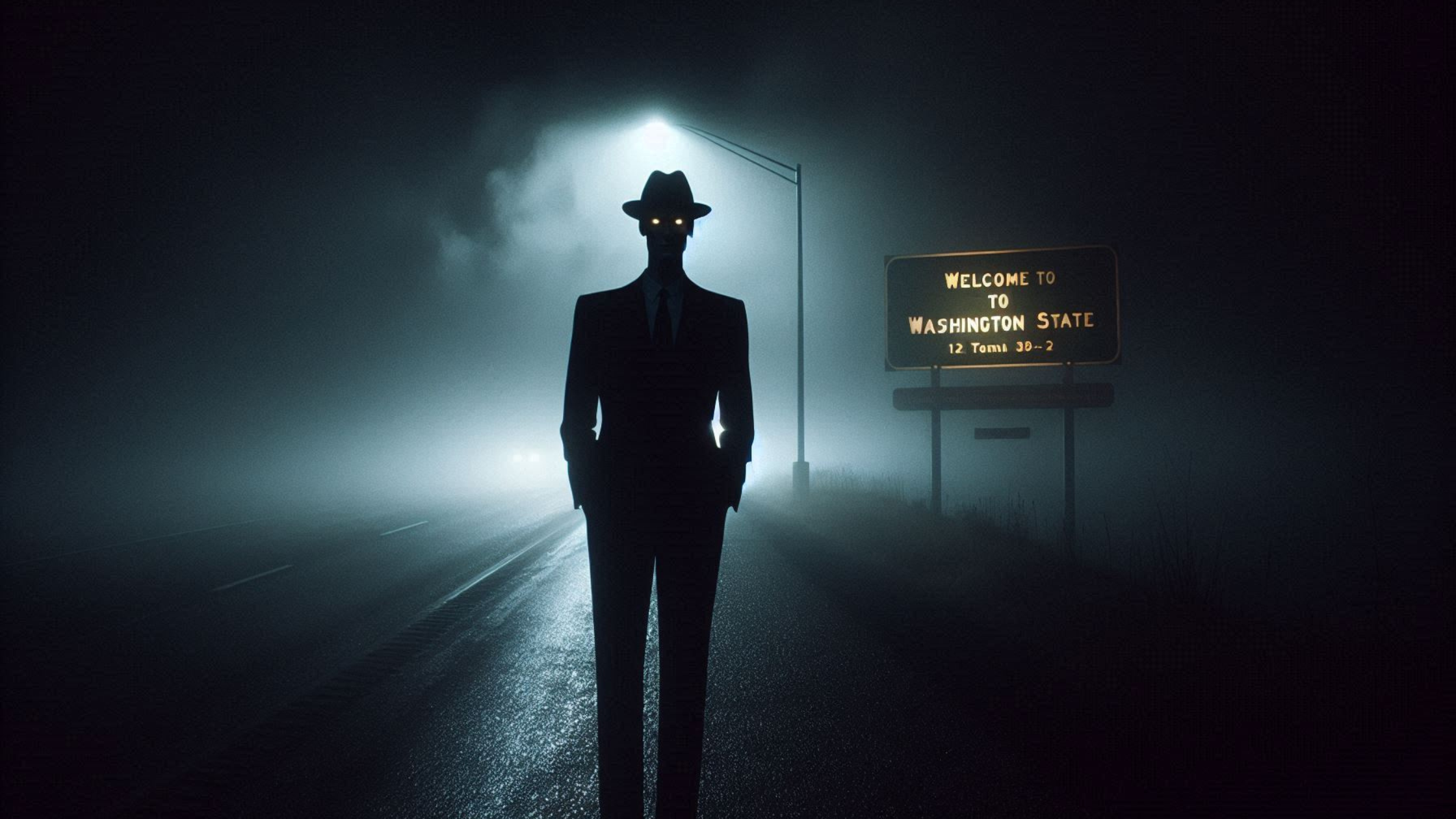Ben Doberman - The Fictional Phantom Killer
The tale of Ben Doberman, a supposed serial kidnapper, has, in a way, truly captured the thoughts and feelings of many. This story, you see, is completely made up, yet it stands as a very clear reminder of just how powerful stories can be, especially those that take on a life of their own, becoming almost like a local legend.
It's fascinating, isn't it, how a narrative, perhaps just a whisper at first, can grow and spread, becoming something people talk about, something that sparks curiosity and, in some respects, even a little bit of unease. A phantom figure, a master of trickery, a person who seemed to just disappear without a trace – these are the sorts of elements that really stick with us, that make us wonder about the darker corners of human imagination.
So, we're going to take a closer look at this particular story, the one about Ben Doberman, and see what it is about these kinds of fictional accounts that makes them so compelling. It's about exploring the shadows of what we imagine, rather than something that actually happened, you know, just to be clear.
Table of Contents
- Who is Ben Doberman, Really?
- Why Do We Find Fictional Ben Doberman Tales So Gripping?
- How Does the Ben Doberman Myth Spread?
- What Can We Learn from the Ben Doberman Phenomenon?
Who is Ben Doberman, Really?
When we talk about Ben Doberman, it's important to remember that we are discussing a character born purely from imagination. According to the myth, he was a mysterious figure who supposedly preyed on people traveling between 1974 and 2002. He was, as the story goes, portrayed as a rather tall, quite unsettling man, with an appearance that might give you pause. This character, often called the "phantom killer," has really taken hold in the minds of those who enjoy stories of true crime, even if this one isn't actually true. His fictional childhood, like many made-up people who do terrible things, was said to be a complicated mix of situations that might have led to his violent tendencies, or so the story suggests, you know.
Personal Details - The Fictional Ben Doberman
| Identity | Fictional Serial Kidnapper/Killer |
| Known Alias | The Phantom Killer |
| Activity Period (Fictional) | 1974 - 2002 |
| Description (Fictional) | Tall, unsettling man |
| Fictional Victims | 52 people (according to some accounts) |
The Origins of the Ben Doberman Story
The story of Ben Doberman is a prime example of how a fictional character can become almost real in the minds of many. It's a chilling narrative, full of twists that make you think, and a haunting picture of a mind lost to darkness. This type of story, you know, seems to draw people in, making them want to hear more, even when they know it's not a real event. It's about the feeling it creates, the way it makes you consider the deeper, sometimes scary, parts of human nature, even if it's all just make-believe. The story talks about a man who vanished without leaving a trace, which is a common element in these kinds of tales, making them even more captivating, in a way.
The fascination with Ben Doberman, too it's almost, comes from the way the story is told. It doesn't just present a series of events; it tries to get into the supposed thinking of this fictional character, giving us a glimpse into a mind consumed by dark thoughts. This psychological aspect, even if it's entirely imagined, is what often keeps people hooked. They want to understand the "why," even if the "why" is part of a made-up world. It's a way for us to explore the darker side of human behavior from a safe distance, really.
It's quite something, isn't it, how a story that is entirely fictional can serve as a very clear reminder of the power that myths and legends hold. These kinds of tales, like the one about Ben Doberman, can shape our conversations and even, in some respects, influence our collective imagination. They tap into something deep within us, a part that is drawn to mystery and the unknown, even when it's a story we know isn't true. This story, for example, has certainly done that for many people.
Why Do We Find Fictional Ben Doberman Tales So Gripping?
There's something about stories of fictional villains, like Ben Doberman, that really catches our attention. Perhaps it's the thrill of the unknown, or the chance to consider the darker sides of human behavior without facing any real danger. These stories often come with elements that make them feel very real, like a mastermind of deceit, or a criminal who just seems to disappear, making them all the more compelling. It’s almost like a puzzle, where you try to piece together the motives and actions of a character, even though they are just words on a page, you know.
The appeal might also come from how these stories are put together. They often feature psychological twists that keep you guessing, and a haunting portrayal of a mind that has gone to a very dark place. This kind of storytelling, that, allows us to explore uncomfortable themes from a distance, giving us a way to process our own fears and curiosities. It’s a sort of mental exercise, if you will, where we can think about the extreme ends of human actions without any actual consequence, which is pretty interesting.
The Allure of the Ben Doberman Narrative
The Ben Doberman story, for example, with its chilling narrative, has really captivated people who enjoy tales of true crime. It’s the kind of story that stays with you, because it touches upon some of the deepest worries we might have about the world and the people in it. Even though it's not real, the feelings it brings up are, and that's what makes it so powerful. It’s a way for us to consider what makes someone do terrible things, even if the person is just a character in a story, you know.
Stories like Ben Doberman's also often become a sort of shared experience. People talk about them, they speculate, they try to make sense of the fictional events. This shared discussion, that, helps to keep the story alive and gives it a sort of cultural footprint. It's a testament to how human beings connect through storytelling, even when the stories are entirely made up. We enjoy the communal aspect of sharing these narratives, much like sharing a campfire tale, you see.
It's interesting to consider how these fictional accounts can sometimes feel more real than actual events, in a way, simply because of how they are presented and discussed. The idea of a phantom killer, someone who operates without leaving a trace, is a very potent image, and it’s one that has been used in many stories throughout history. The Ben Doberman narrative taps into that deep-seated human fascination with the unknown and the unexplained, which is why it sticks with people, you know.
How Does the Ben Doberman Myth Spread?
In our modern world, stories, even fictional ones like Ben Doberman's, can travel far and wide very quickly. Social media platforms, for instance, play a huge role in how these narratives gain traction and reach a broad audience. A short video, or a quick post, can introduce the story to countless new people, making it a topic of conversation across different groups. It's really quite remarkable how fast information, or in this case, fictional information, can move, you know.
Consider, too it's almost, how a TikTok video from someone like "nightmarenote" can spread the "eerie tale of Ben Doberman," describing him as a "tall and sinister figure responsible for the disappearances of 52 people." These kinds of bite-sized pieces of content are very effective at catching attention and making people curious enough to look for more information. It's a testament to the power of short-form media in shaping what people talk about, really.
Ben Doberman and Social Media's Reach
Beyond short videos, you can also find people named Ben Doberman on social media sites like Facebook. While these are actual people and not the fictional character, the existence of these profiles can, in a way, add another layer to the myth's presence online. People might search for the fictional character and come across real individuals, which sometimes blurs the lines a little bit between story and reality for some, you know.
For example, you might see profiles like "August 2017 Sweden foodie loved by my family just the right mixed of chaos and ️" or "35:aspiring muscle • there’s no lgb w/out the t • leather kinkster cactus dad horror enthusiast •." These are clearly real people with their own lives and interests, but their names, in a way, echo the fictional character's name, which is just a coincidence, of course. It just goes to show how widely a name can appear, even if it's just by chance, really.
The spread of the Ben Doberman story, you see, highlights how interconnected our online world is. A story, whether it's true or made up, can quickly become part of the collective consciousness, shared and discussed by people across different platforms. It's a powerful demonstration of how information, or entertainment, can travel, and how easily a fictional tale can find a large audience, which is pretty interesting.
What Can We Learn from the Ben Doberman Phenomenon?
The whole Ben Doberman story, even though it's not real, gives us a chance to think about why we are drawn to certain kinds of narratives. It makes us consider the darker parts of what it means to be human, and how we process difficult ideas through stories. These fictional crimes are not just about violence; they are, in some respects, about a violation of trust, a disruption of peace, and a challenge to our sense of safety, all within the bounds of a made-up scenario, you know.
It’s also a way to think about the difference between fiction and reality. On June 15, 2023, for instance, in Monroe Township, Clermont County, Ohio, United States, there was a real, very sad event where Clayton, Hunter, and Chase Doerman, who were seven, four, and three years old respectively, were shot and killed at their home. This is a very serious and tragic real-world event, completely separate from the fictional Ben Doberman character. It's important to keep these two things distinct, really, as one is a made-up story for entertainment, and the other is a genuine human tragedy.
Reflecting on the Ben Doberman Effect
The Ben Doberman story, in a way, shows us how powerful storytelling can be, especially when it taps into our deeper curiosities about the unknown and the unsettling. It allows us to explore the idea of a "phantom killer" and the psychological aspects of such a character without any real-world consequences. This exploration, that, can be a form of processing for many, a way to consider difficult topics in a safe, fictional setting, which is quite valuable.
Ultimately, the fascination with fictional figures like Ben Doberman speaks to our innate human need for stories. We use them to understand the world, to entertain ourselves, and sometimes, to simply feel something. Even if the tale is entirely made up, its impact on our minds and conversations can be quite significant, reminding us that stories, no matter their origin, hold a special place in our lives, you know.

Ben – Doberman (Reserved) Call +44 7930 408458 For Available Dogs

Ben – Doberman (Reserved) Call +44 7930 408458 For Available Dogs

Ben Doberman: The Haunting Tale of Psychological Terror in Washington